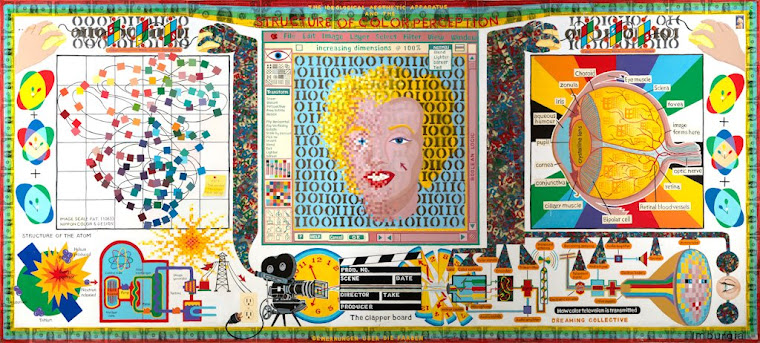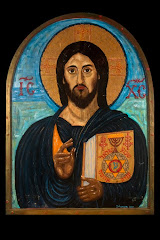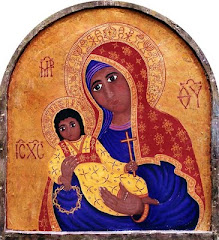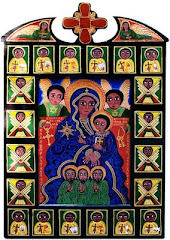
Friday, July 31, 2009
Thursday, July 30, 2009

Monday, July 27, 2009
another post over at 'Journeying with those in exile'
I have been busy painting a copy of Van Gogh’s “Wheatfields with Crows,” for a ‘Forgery Art Exhibition’ I was invited to (aug 1 for any who are interested). It is a different experience than painting Coptic and Orthodox Icons I have been focusing on for awhile. Some years ago I read through the 3 vol. set of Vincent’s letters, he was an extraordinary theologian and writer. I have been re-reading them a bit and came upon one of his last letters to Bernard. Bernard had sent him a poem:
“…for hope has pored its neurosis into my bosom—Winter having neither a sou or flowers—Come from the blue plains—Paled by the length of leagues—Twisted on his spiraled cross.”
Vincent writes to Bernard: “But is seems to me you do not say clearly enough what you want to make felt--the certainty that one seems to have, and which one can in any case prove of the nothingness, the betrayal of the desirable good and beautiful things; and that, despite the knowledge, one lets oneself be eternally fooled by the charm which external life, the things outside ourselves, exercises on our 6 senses, as if one did not know anything, and especially not the difference between objectivity and subjectivity. Fortunately for us we remain stupid and hopeful in this way. ‘Twisted on his spiral cross,’ conveys very well the exaggerated leanness of the mystic Christ. But why not add that the anguished look of the martyr is, like the eye of a cab horse, infinitely sad; that would make it more Parisian where one sees such looks in the eyes of the superannuated nags of the little carriages as well as in those of the poets and artists.” Looking at Vincent’s self-portraits I think I see that look in his eyes; my wife says she sees it my eyes sometimes and it worries her. “Wheatfields” was Vincent’s last painting, he put down the brush, got his gun, walked out into the field and shot himself. After the show I am going to paint him into the picture, fallen, clutching his wound, praying, and surrounded by angels.
Wednesday, July 22, 2009
Tuesday, July 21, 2009
“secular religion?” “opium?” “shat upon by Jesus?”
Well, most of the writings of the Iconoclasts were destroyed when the Iconodules reemerged victorious after a couple hundred years of battle. One argument against icons that survived (by an interlocutor of John of Damascus I think) warned that “Icons enter the mind unimpeded by reason,” He went on to say that ordinary folks who possessed Icons in the home were like to have their imaginations stimulated in heretical or licentious ways lending towards magic and fanciful impulses and unhealthy stimulations. One might allow for Icons or stained glass in a church, he hedged, where the images would be surrounded by doctrine and the discourse of the church. Since most folks were illiterate, the church had almost monopoly control on written discourse, but lots of folks could produce or buy simple pictures of Mary or the saints and set up individual alters in their own homes and develop worship practices that sometimes fell out side the orthodox. When someone would get healed of some affliction while praying with an Icon, it would sometimes come to be seen as having special powers, and it’s owner might travel around with the miracle dispensing Icon and charge for it’s services—a kind of early teli-evangelism. Of course writing could become ensnared in biblical prohibitions against idolatry as well. There was a practice of writing out the name of Hashem in letters and wearing or praying with it like a talisman to ward off sickness or evil or even lightning strikes! Hieroglyphics, especially Egyptian, are a kind of midpoint between writing and pictures and are often condemned in early Jewish literature up to the time of Maimonides. The early Egyptians built a sculpture of a crocodile out of lead that is credited with keeping Cairo safe from these creatures. Often people speak of the “art of writing, or cooking, or making love.” An acquaintance has a house filled with the paintings of Thomas Kincaid, the evangelical “painter of Light.” Once a good investment they are now falling in value. Kincaid’s early work was almost void of humans. They strike me like apocalyptic, potemkin villages waiting for the raptured to occupy them in the afterlife. He is battling liver cancer and the paintings seem to comfort him. He chides me for my Romanism, but there is no one to pray to/with in a Kincaid painting; I think he pictures himself in one of those fluorescent English cottages with his wife who passed some years ago. The Icons at St. Catherines on Mt.Sinai survived the Image wars and are worth a visit. I painted a faithful copy of the “Blessing Christ” commissioned by Justin about 1600 yrs ago. I made minor changes. I added the Hebrew letter ‘ayin’ (looks like a Y ) in the center of the Bible Jesus is holding. It is a silent letter, a servant letter, so to speak, thought to represent the ‘eye of G-d.’ It is not the actual eye.













